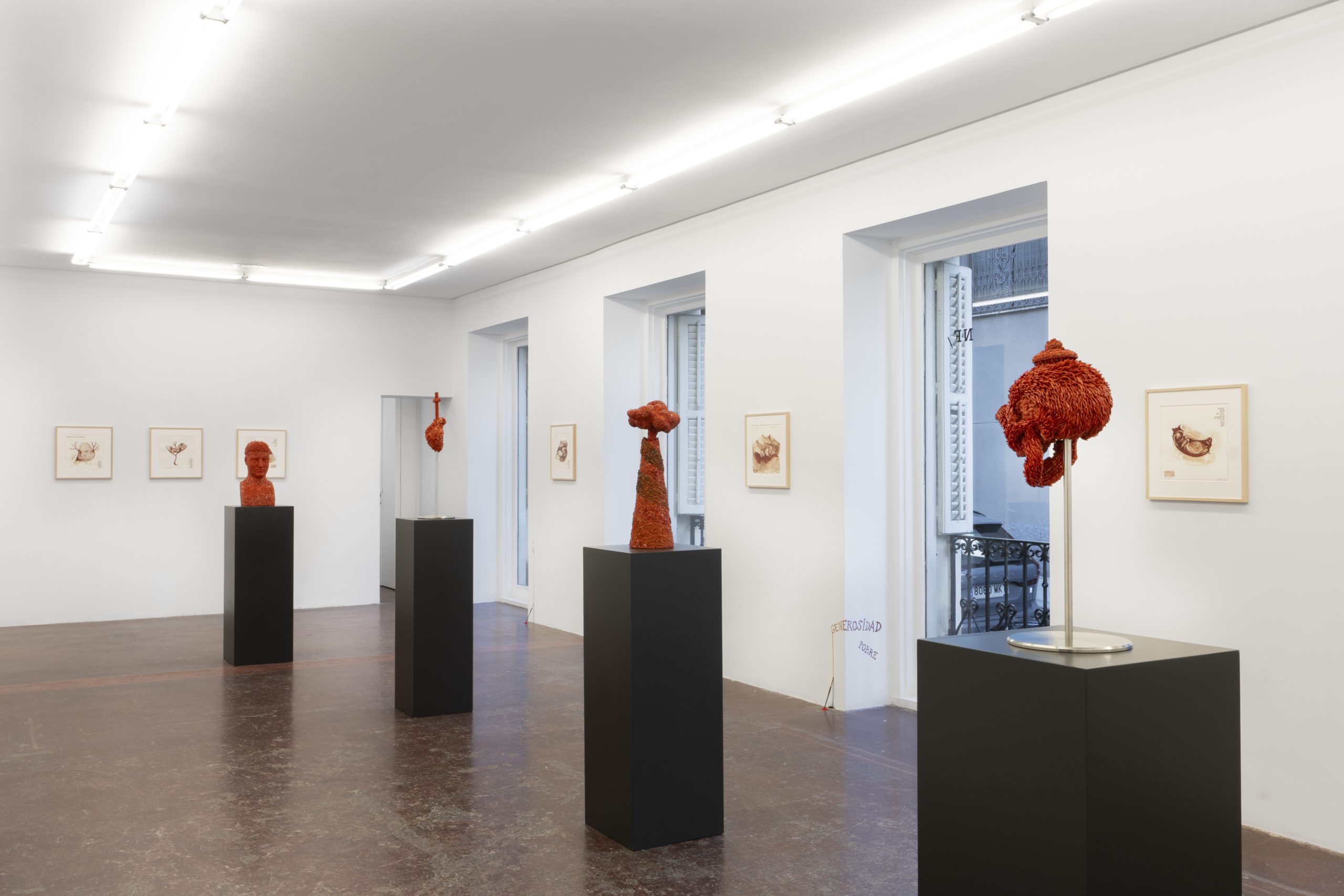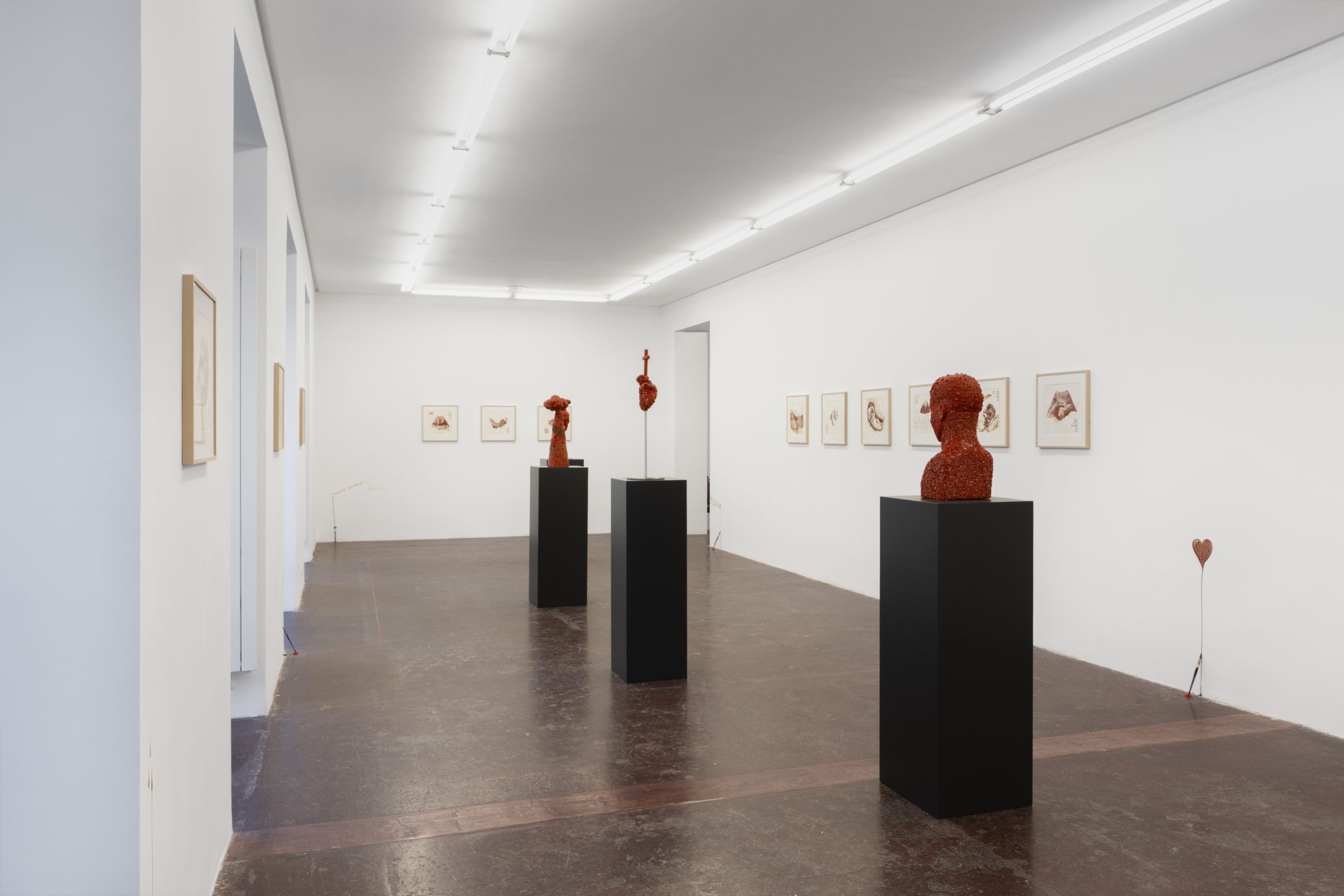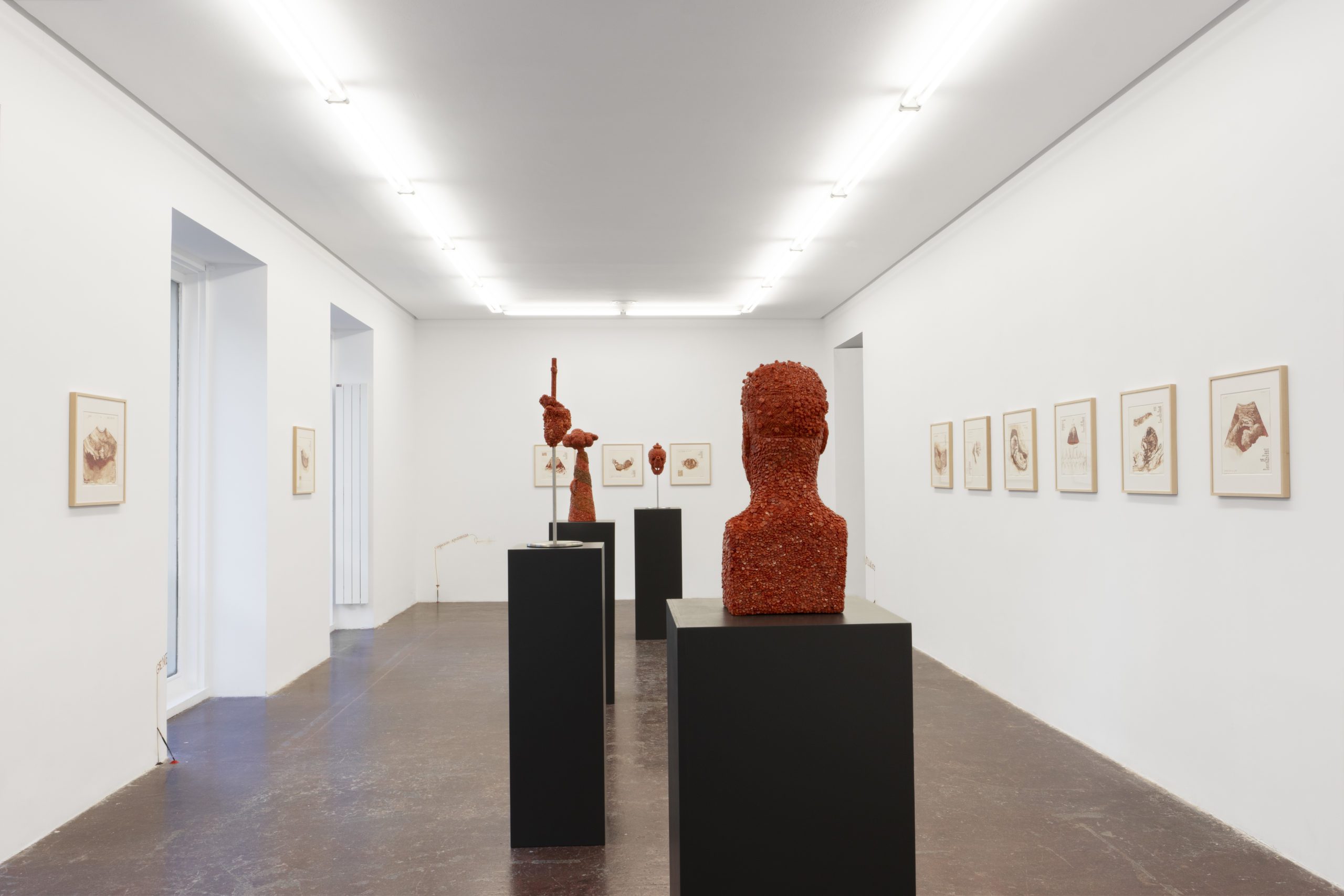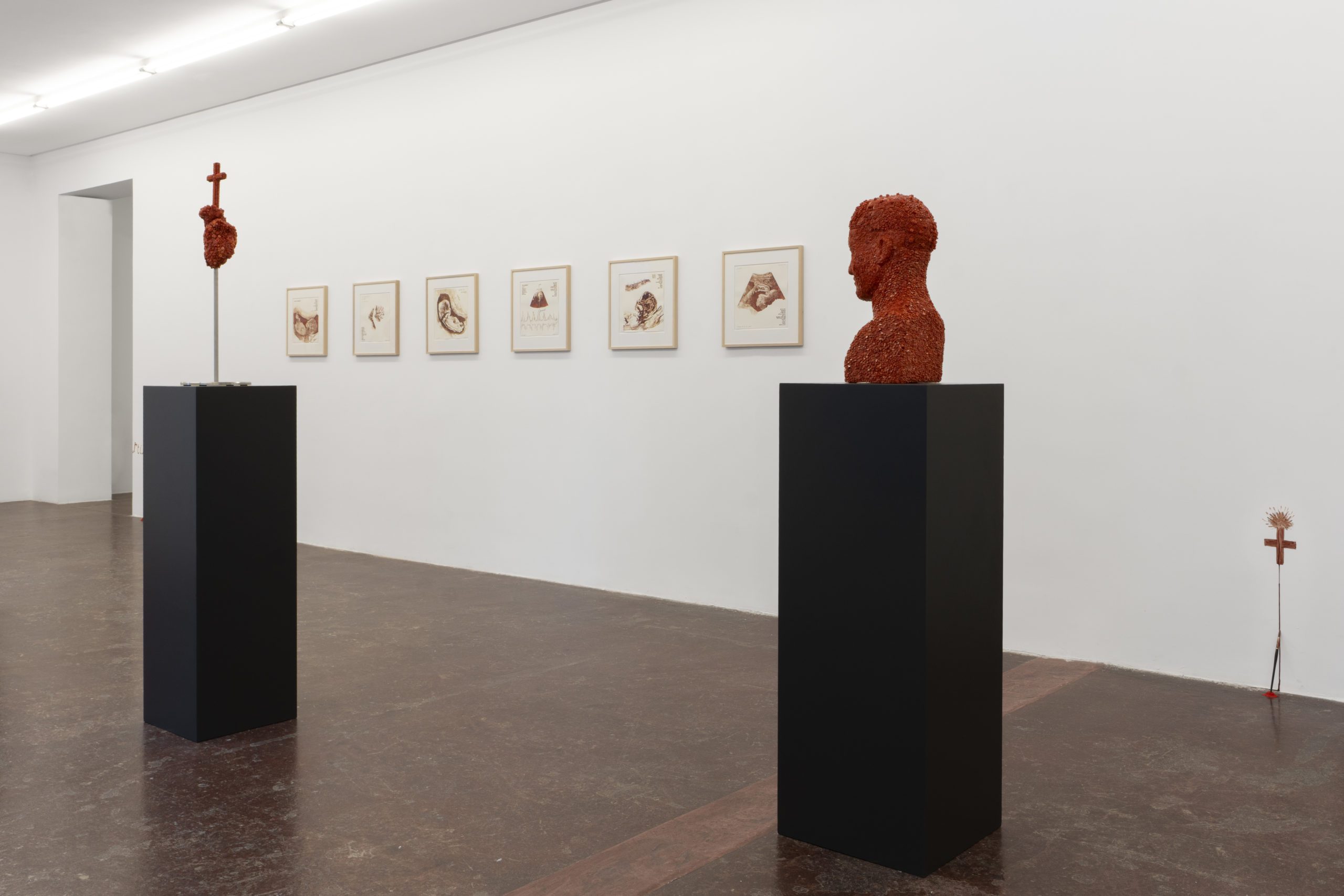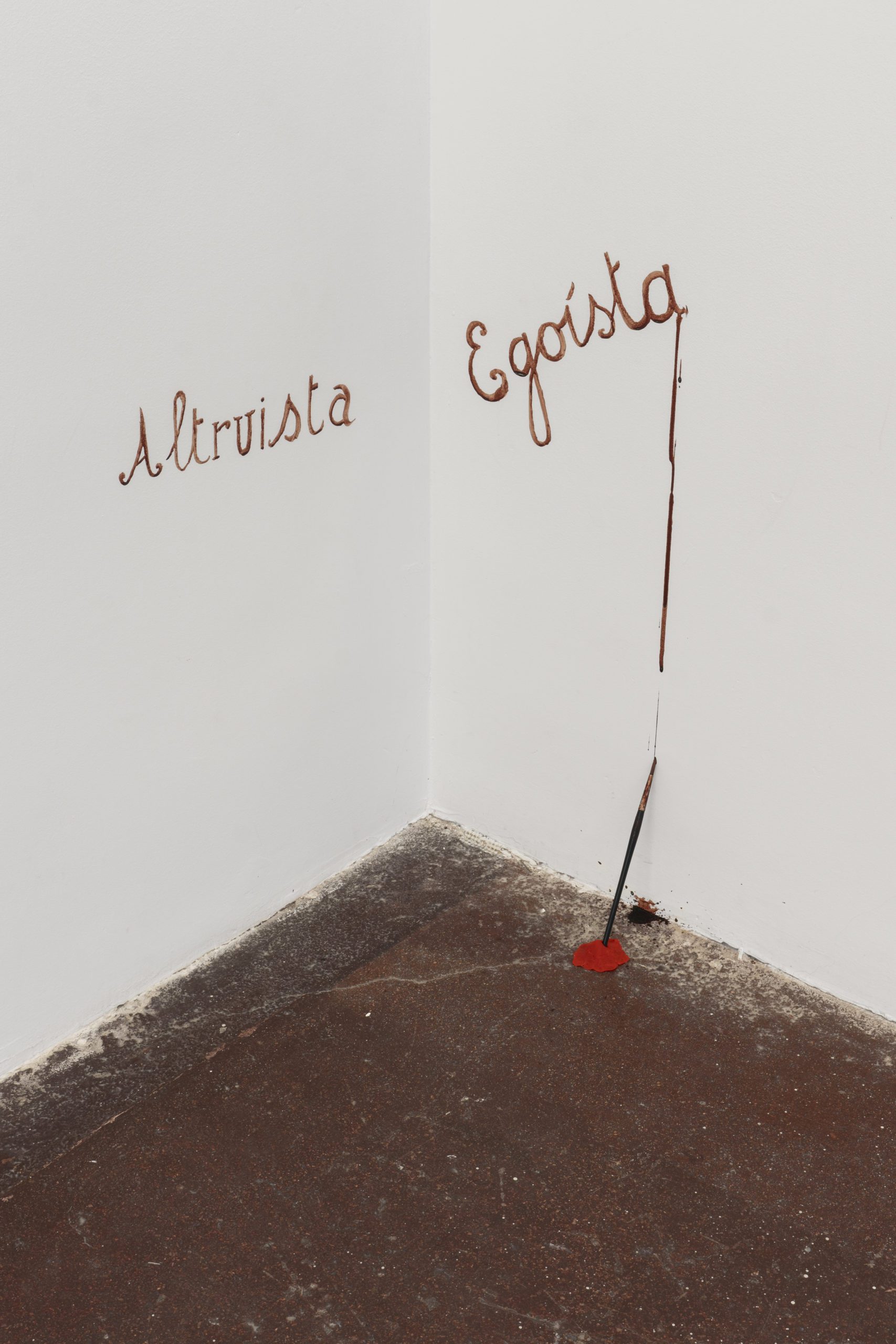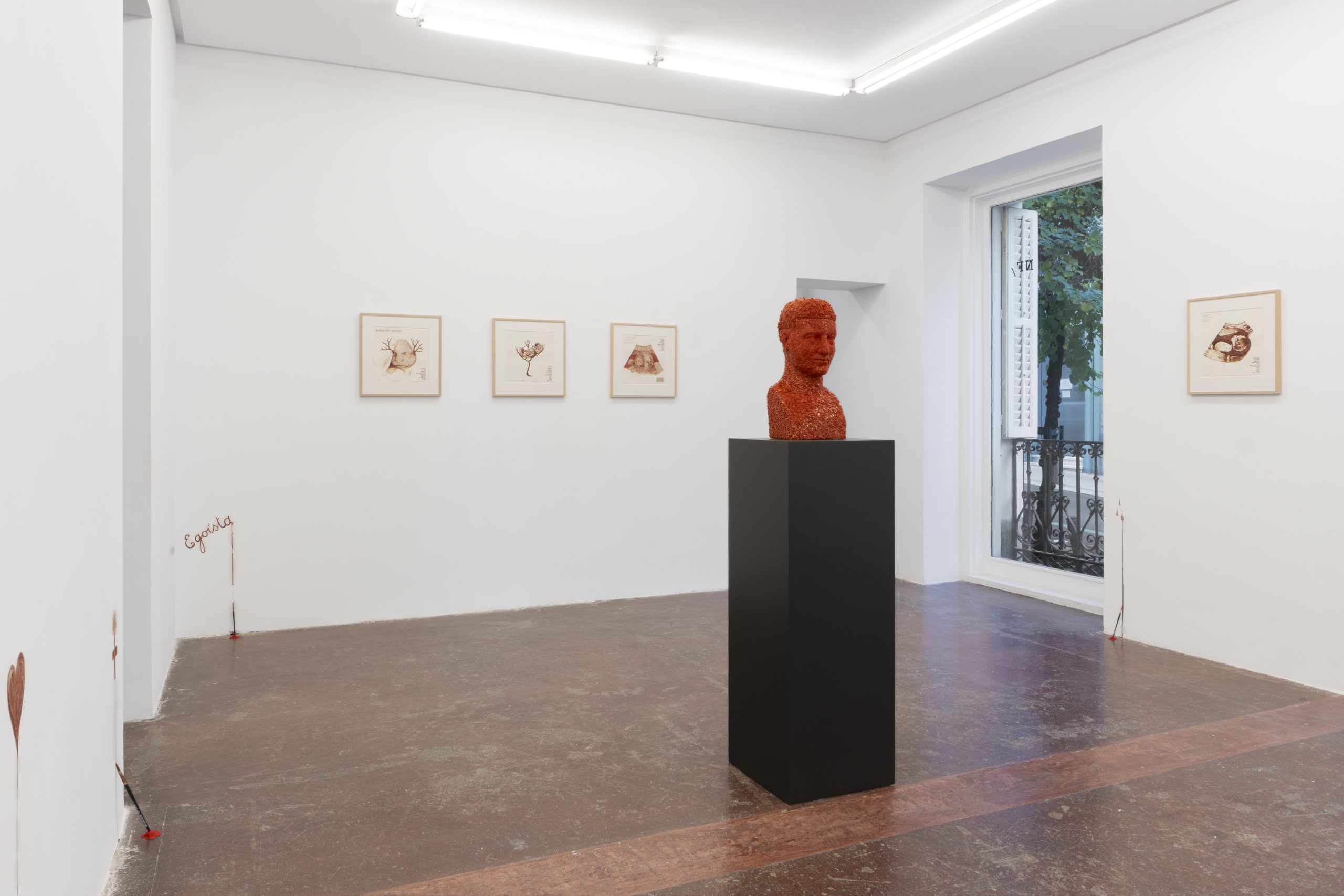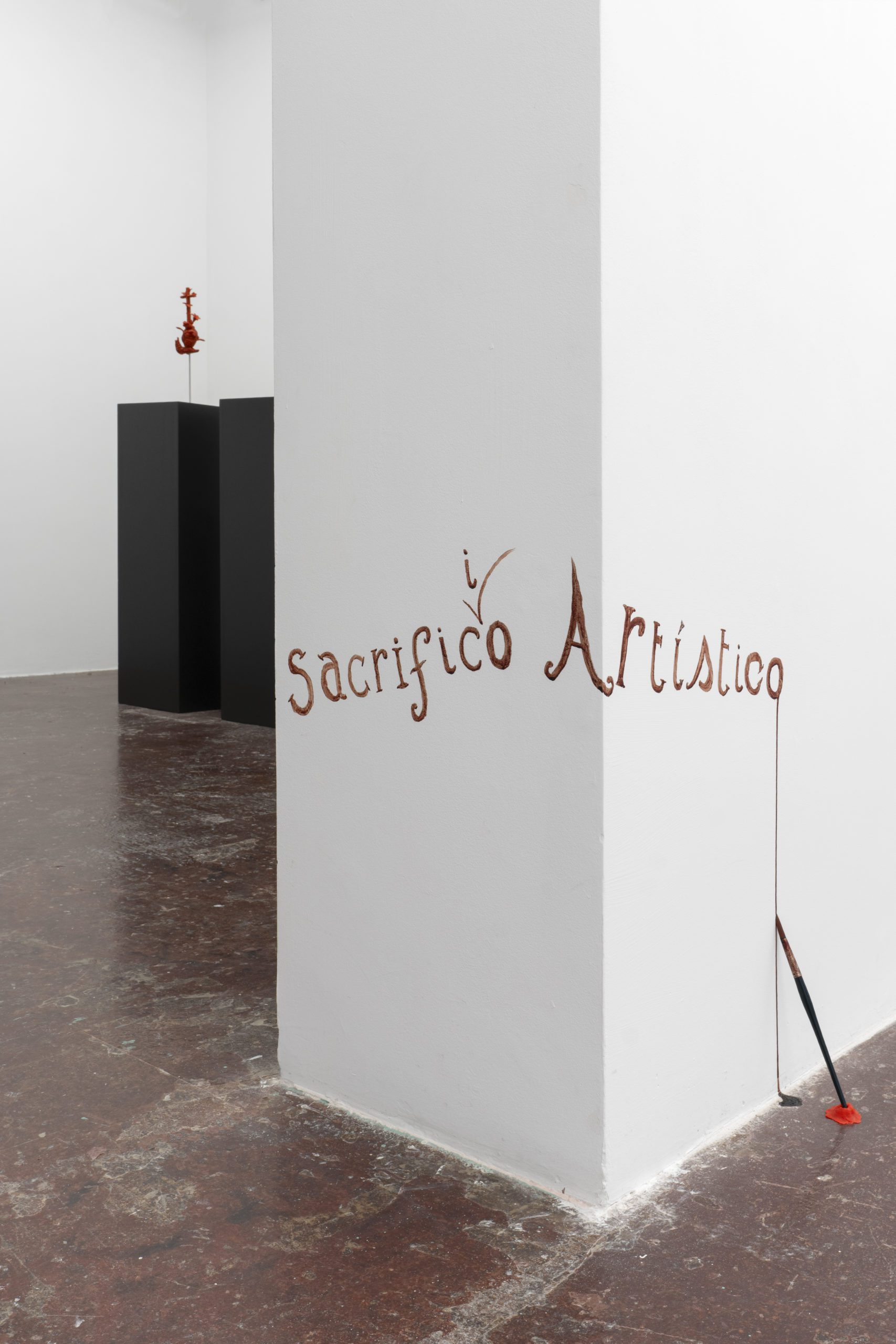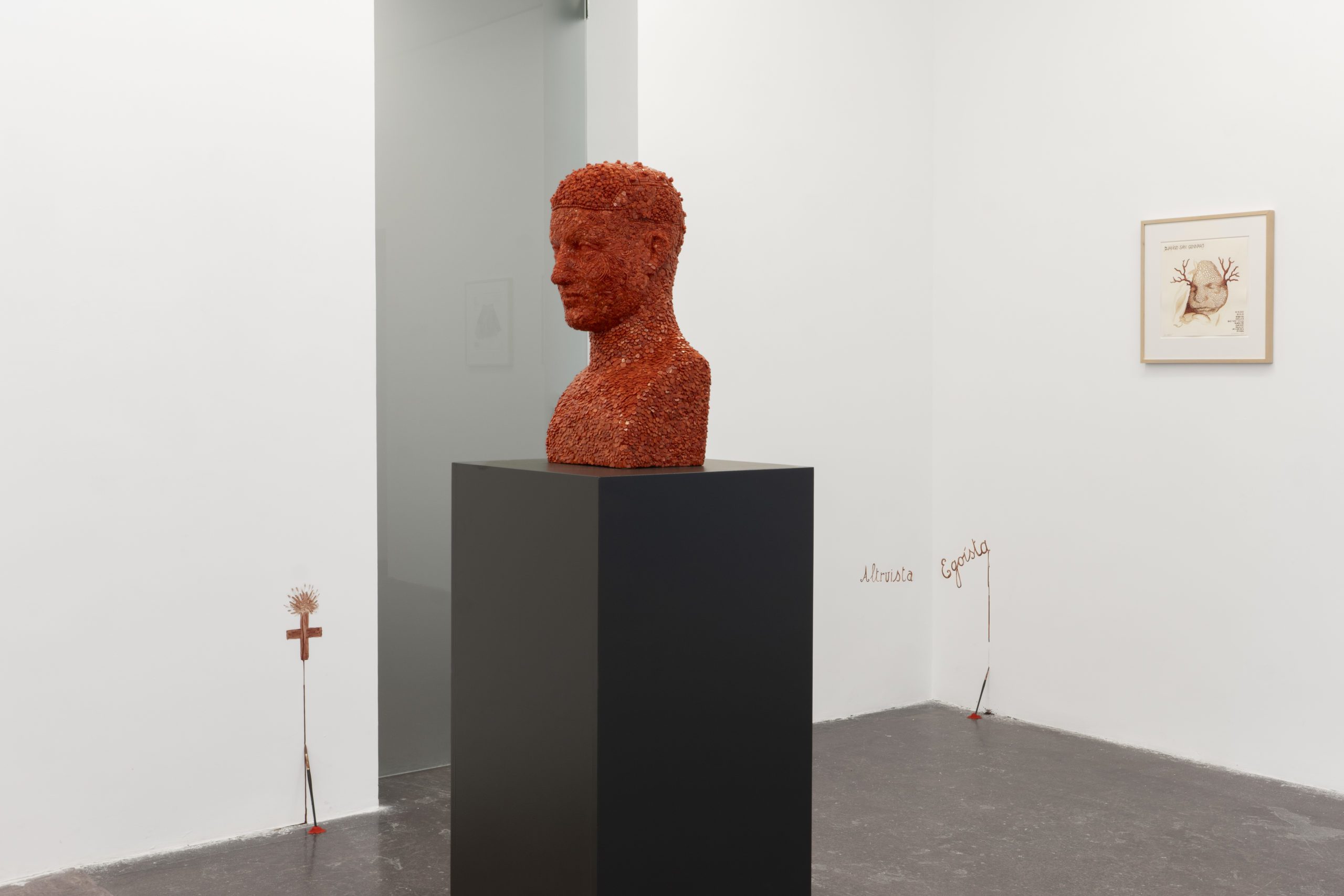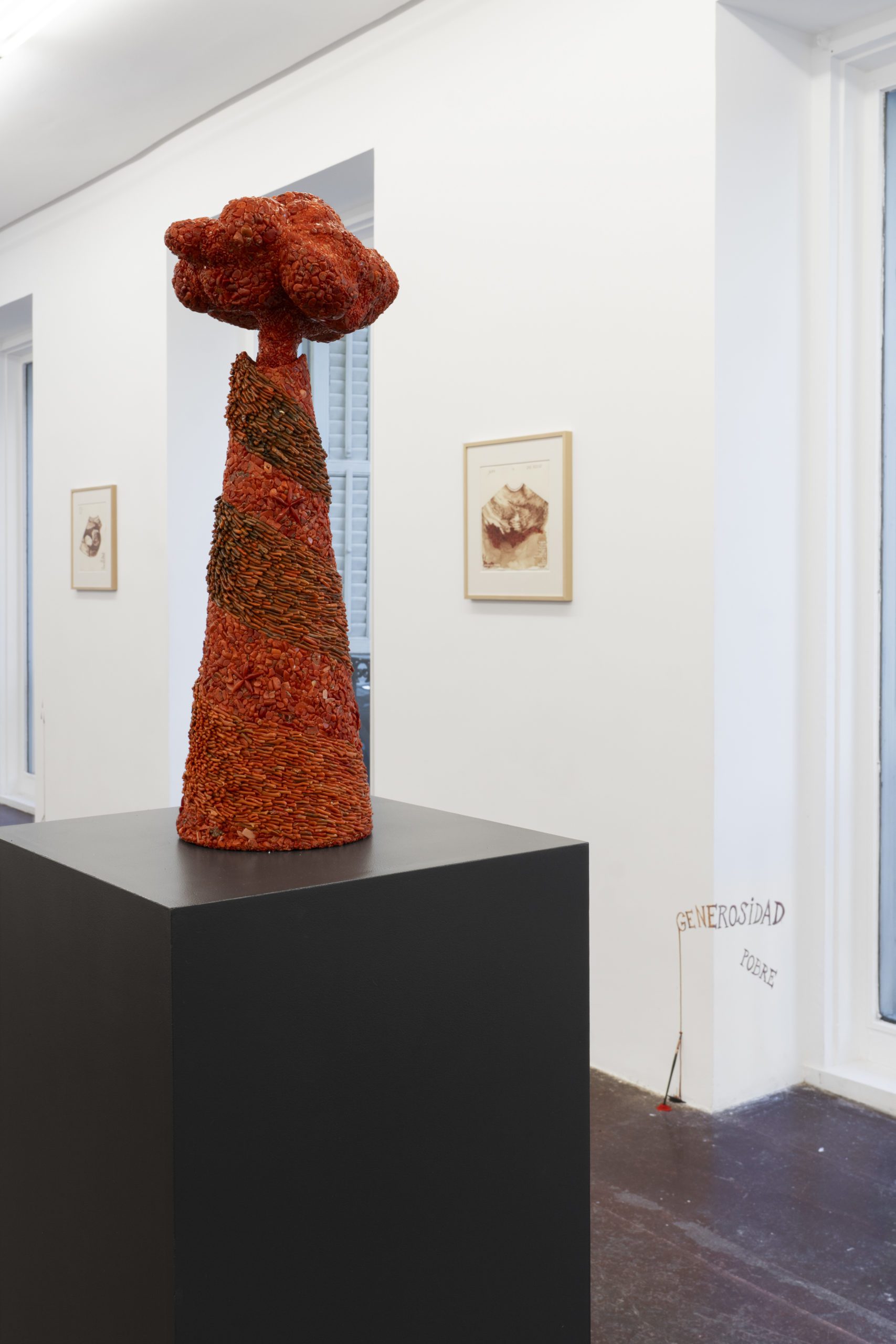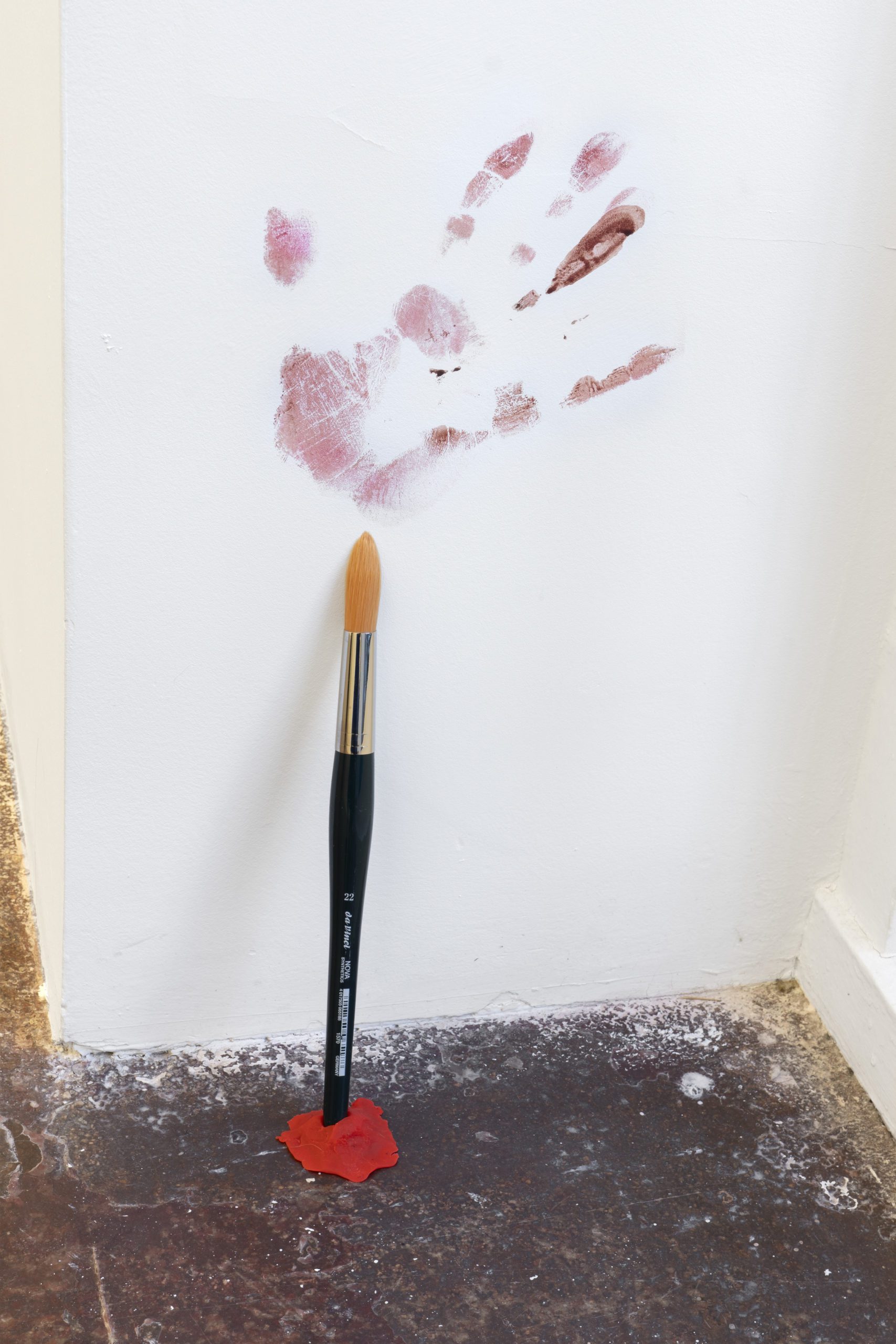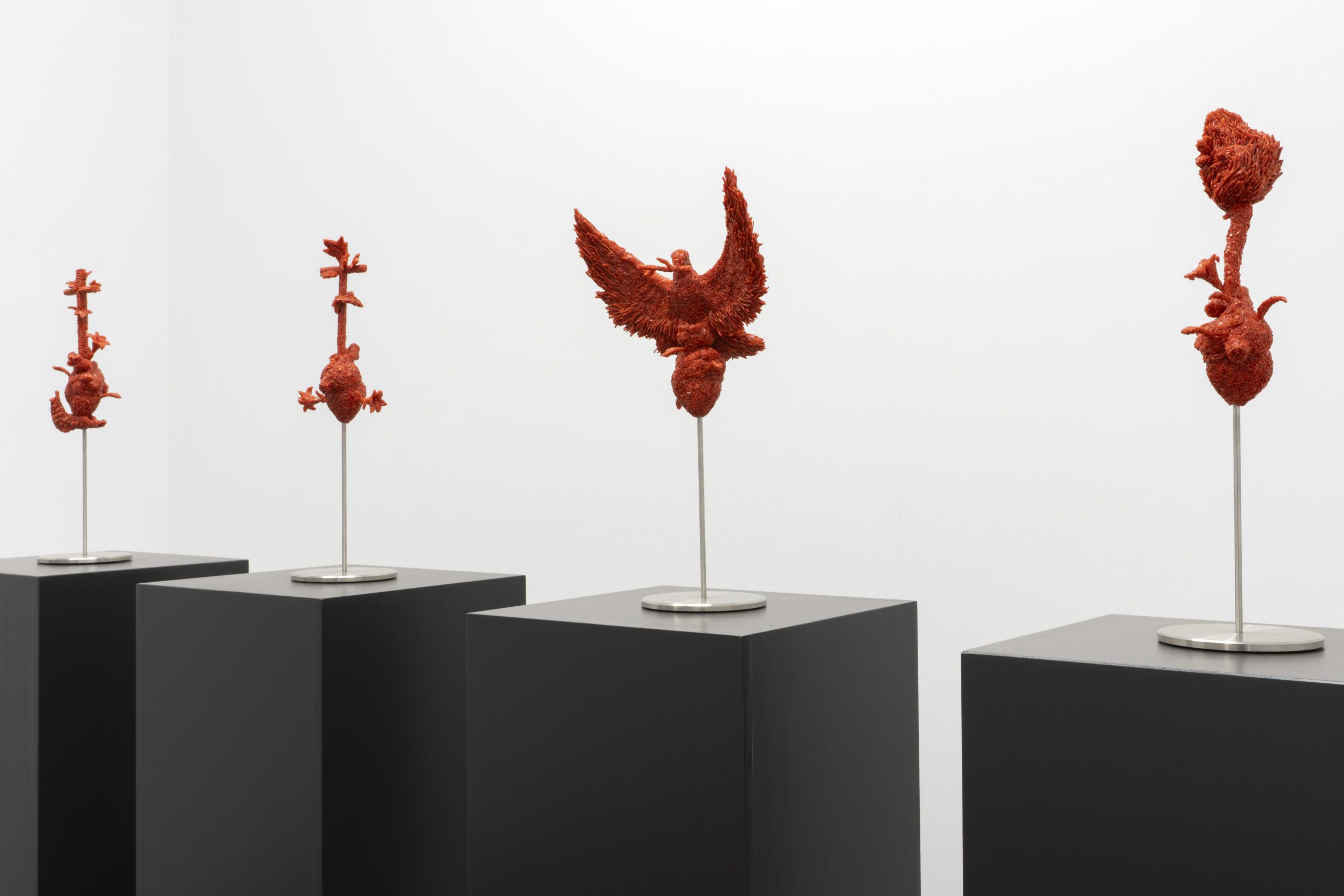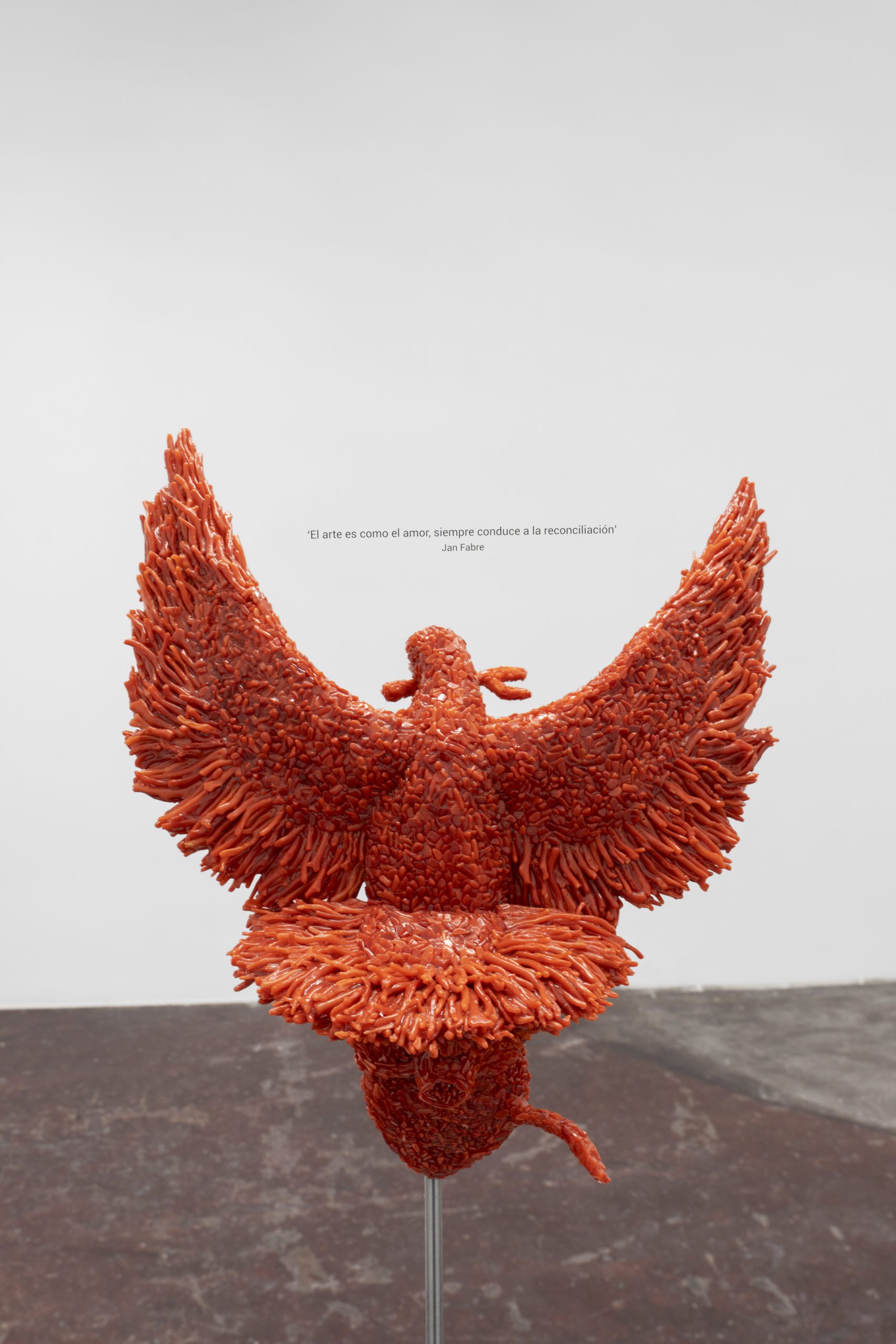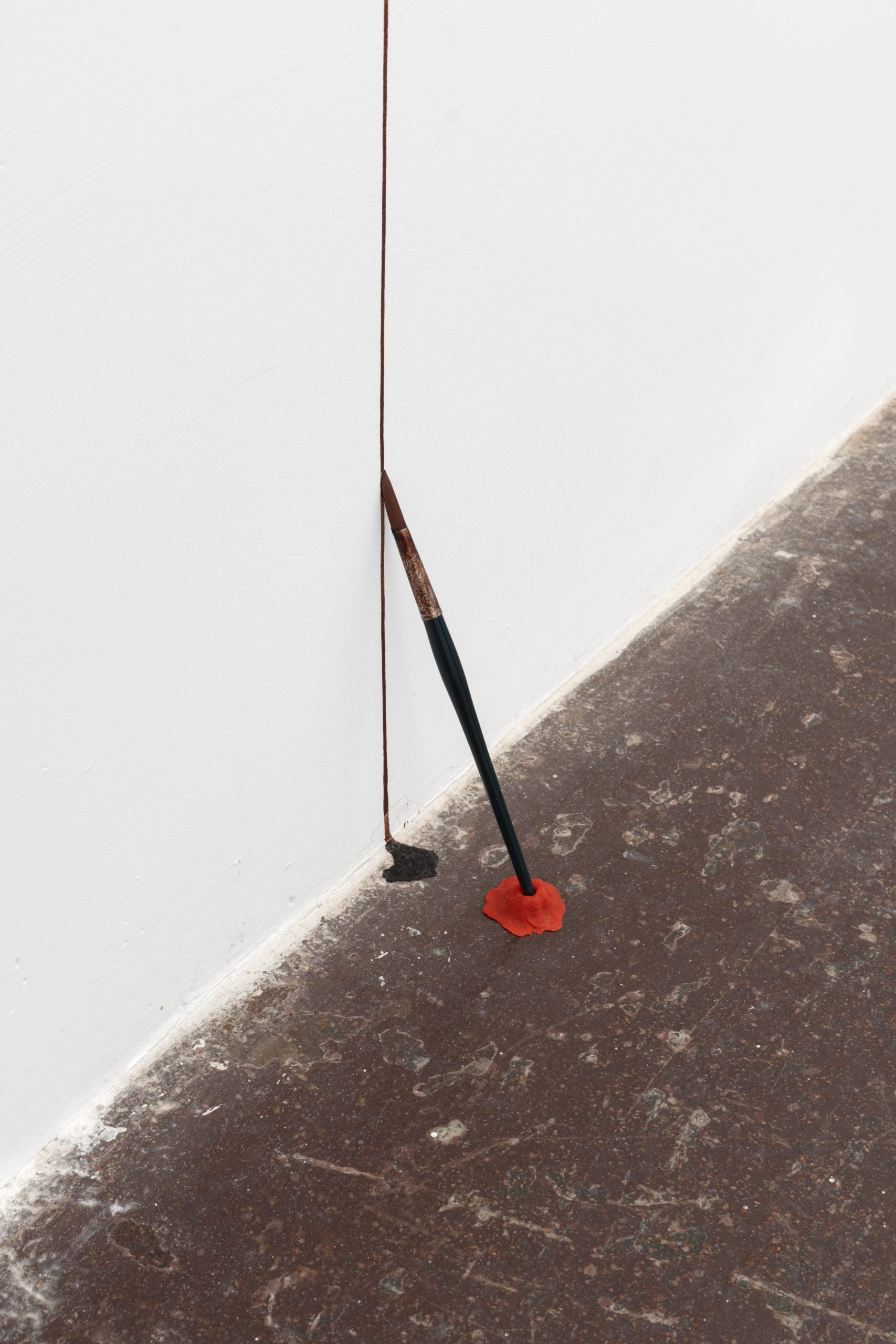Exhibitions /
JAN FABRE. LA MATERIALIZACIÓN DEL AMOR
11.11.2025 - 11.12.2025‘When there is love, there is life’
Jan Fabre, 2021
Jan Fabre. La materialización del amor marks the Belgian artist’s first exhibition at NF/ NIEVES FERNÁNDEZ Galería, Madrid. Centred on the transformative power of love, the exhibition brings together coral sculptures, blood drawings and performance to explore the intersections of vitality and mortality, creation and dissolution.
Love functions as a guiding principle in Fabre’s oeuvre. For this exhibition, he presents sculptural works crafted from red Mediterranean coral sourced from the Bay of Naples, alongside a series of drawings executed with his own blood, reflecting on his son, Django Gennaro Fabre. During the opening, Fabre will perform Soy un hombre pelícano (I am a pelican man), an action that engages with themes of sacrifice, transformation and universal love. The performance is inspired by the medieval Christian legend of the pelican nourishing its young with its own blood, a symbol of altruism, love and regeneration. This moment will form a living extension of the exhibition, linking bodily gesture to material and mythological narratives.
Myth and ritual are central to the exhibition. Referencing Ovid’s Metamorphoses, coral emerges from the blood of Medusa, crystallising transformation. Similarly, Fabre uses his own blood as a symbolic medium, weaving personal narrative into broader cultural frameworks. His coral sculptures, including models of works permanently installed in Naples’ Pio Monte della Misericordia, home to Caravaggio’s The Seven Works of Mercy, echo the chapel’s iconography through heart-like forms that merge life and death.
The work ‘The Teapot of Death’ serves as one of the central images of the exhibition. This striking coral sculpture fuses a skull with a teapot, uniting the familiar and the uncanny. The everyday object evokes comfort and hospitality while confronting the viewer with mortality. Through this poetic gesture, Fabre reminds us that death is never distant. The exhibition stages a reconciliation between life and death, a perpetual balancing act that materialises love as both vital and transformative.
> DOSSIER (PDF)
